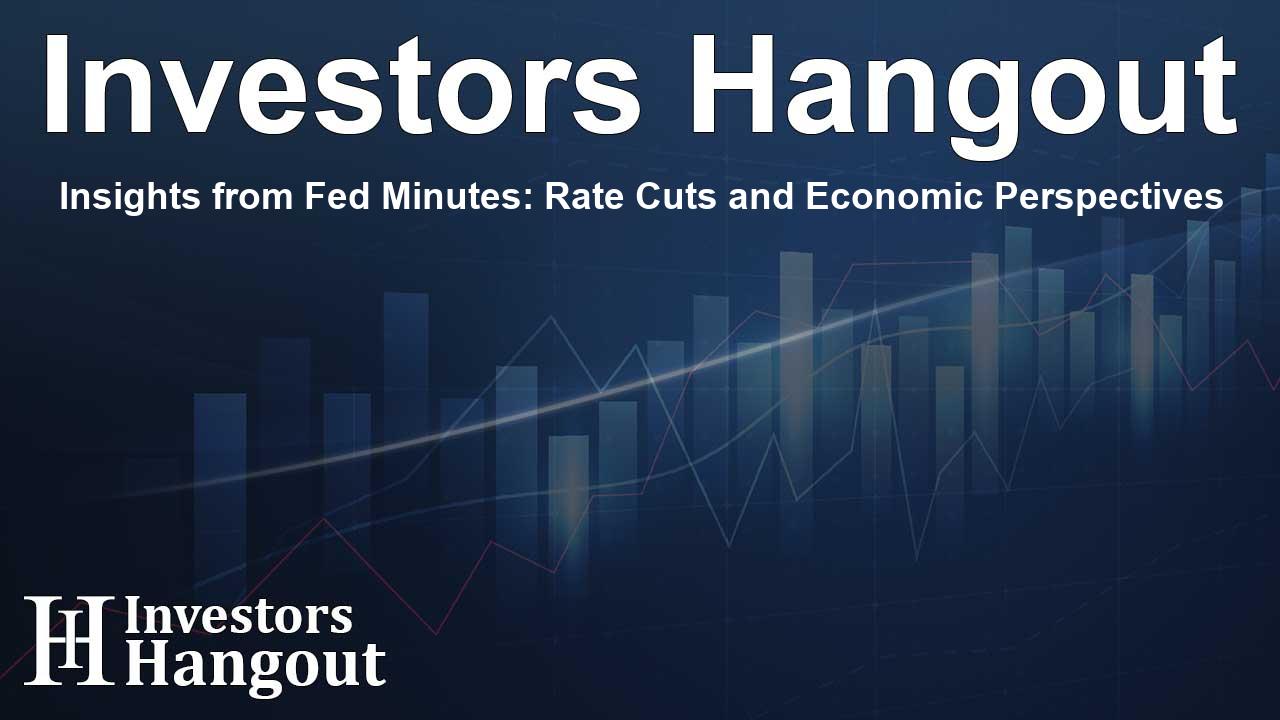Insights from Fed Minutes: Rate Cuts and Economic Perspectives

Understanding the Recent Fed Minutes: Key Insights
The minutes from the Federal Open Market Committee's recent policy meeting have provided fresh insights into their monetary policy direction. Released following their discussions, these minutes confirm that while uncertainty remains, the overall outlook has seen some stabilization.
Financial markets are currently anticipating that the Federal Reserve will maintain interest rates during its next meeting, with expectations for the first rate cut being scheduled for later this year. This reflects a cautious optimism regarding future policy maneuvers.
Key Takeaways from the Fed Minutes
The detailed reading of minutes from the June policy meeting reveals acute concerns among policymakers regarding inflation and economic conditions:
- The unanimous decision to hold the federal funds rate between 4.25% and 4.50% underscores the Fed’s ongoing caution in navigating the complex economic landscape.
- While discussions did not fundamentally alter predictions for interest rates, the minutes highlighted differing opinions among central bank officials on how aggressive to be in easing monetary policy moving forward.
Different Perspectives on Rate Cuts
Three distinct viewpoints emerged among Fed officials, each suggesting varying approaches to rate adjustments:
1. A majority believe that a reduction in the federal fund rate is both likely and necessary before the year concludes. They argue that the current inflationary effects from tariffs may not be as severe as previously thought.
2. Some officials advocate for maintaining the current rate, concerned about persistent inflation figures remaining above the intended target.
3. A few policymakers would favor implementing rate cuts sooner if economic data aligns with projections, suggesting a readiness to react to new information.
Concerns Over Tariff Effects
With ongoing discussions regarding tariffs, the Fed's recent minutes raised alarms about potential inflationary pressures emerging from tariff-induced supply chain disruptions. Policymakers reflected on the inconsistent export data, which complicates their decision-making process for future rate adjustments.
This hesitation aligns with their broader strategy of exercising caution in adopting easing measures, as they commit to basing decisions on robust economic data.
The Role of Economic Data
With impending tariff decisions and their consequences looming, the context surrounding the Fed's minutes suggests a careful approach in upcoming meetings. Recent economic data influences their outlook, shedding light on potential inflation trends and growth forecasts.
Inflation Concerns Above Target?
As expected, the minutes reiterated that although inflation rates have shown signs of easing, they continue to remain above the target of 2%. This highlights an ongoing dilemma for the Federal Reserve as they weigh their next moves against the backdrop of relatively stable labor market indicators.
Recent evaluations depicted the labor market as “solid,” which generally endorses the idea of potential rate cuts. However, the Fed’s concern over inflation illustrates a delicate balancing act between stimulating economic growth and controlling price levels.
Market Reactions and Future Implications
Investors remain agile and attentive to every indicator as they consider implications for various investments and financial strategies. The anticipation surrounding potential rate cuts influences everything from consumer borrowing costs to corporate investment plans.
Frequently Asked Questions
What are the main takeaways from the Fed’s recent meeting minutes?
The minutes revealed diverse opinions among Fed policymakers regarding potential rate cuts and highlighted persistent concerns about inflation due to tariffs.
How do current inflation rates affect the Fed’s decisions?
Despite some reduction in inflation metrics, rates still exceed the 2% target, complicating the Fed's decision-making on potential cuts.
What factors contribute to the differing views among Fed policymakers?
Diverging views stem from varying beliefs about the influence of tariffs on inflation and economic conditions, leading to contrasting recommendations on rate adjustments.
What role do tariffs play according to the Fed minutes?
The Fed expressed concerns that tariffs might impact supply chains and economic productivity, complicating their approach to monetary policy.
What can we expect from the Fed in the coming months?
As economic data continues to evolve, the Fed is likely to remain vigilant and focused on adjustments based on real-time indicators of inflation and growth potential.
About The Author
Contact Caleb Price privately here. Or send an email with ATTN: Caleb Price as the subject to contact@investorshangout.com.
About Investors Hangout
Investors Hangout is a leading online stock forum for financial discussion and learning, offering a wide range of free tools and resources. It draws in traders of all levels, who exchange market knowledge, investigate trading tactics, and keep an eye on industry developments in real time. Featuring financial articles, stock message boards, quotes, charts, company profiles, and live news updates. Through cooperative learning and a wealth of informational resources, it helps users from novices creating their first portfolios to experts honing their techniques. Join Investors Hangout today: https://investorshangout.com/
The content of this article is based on factual, publicly available information and does not represent legal, financial, or investment advice. Investors Hangout does not offer financial advice, and the author is not a licensed financial advisor. Consult a qualified advisor before making any financial or investment decisions based on this article. This article should not be considered advice to purchase, sell, or hold any securities or other investments. If any of the material provided here is inaccurate, please contact us for corrections.
